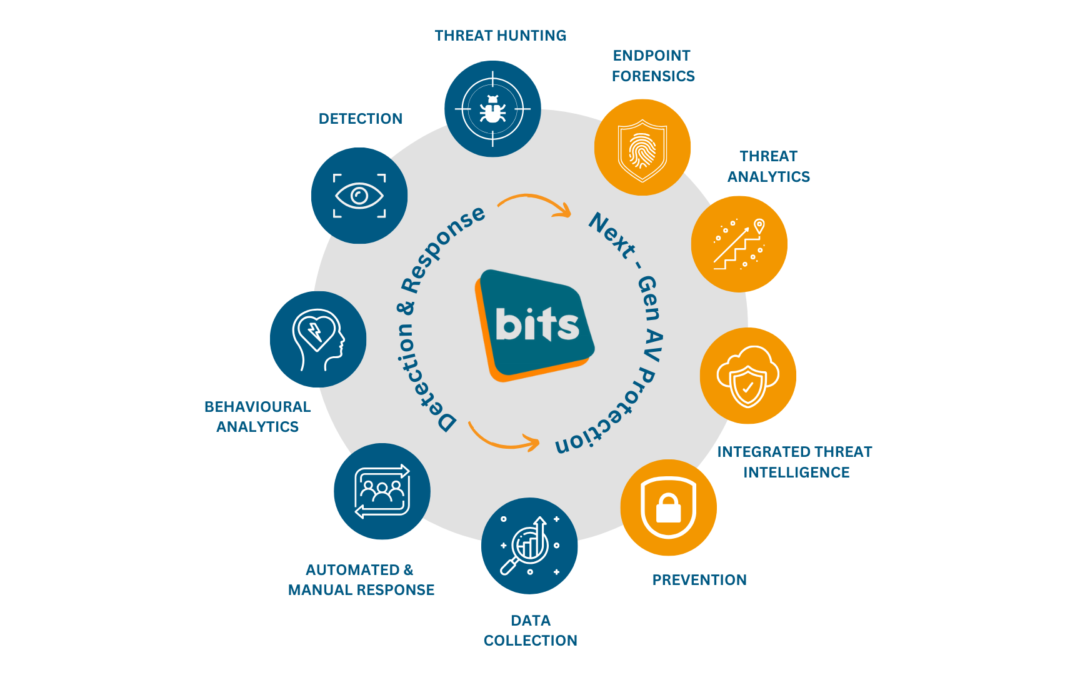In an increasingly digital world, the acronyms SOC and EDR have become integral to cybersecurity discussions. But what exactly do they mean, and how do they protect your organisation from cyber threats? Let’s break it down.
Understanding SOC: Security Operations Centre
A security operations centre (SOC) is the nerve centre of an organisations cyber security efforts. It’s a team and facility dedicated to monitoring, detecting, and responding to security incidents. Here’s what a SOC typically does:
1. Monitoring:
The Security Operations Centre (SOC) maintains continuous vigilance over an organisation’s digital landscape, actively seeking any indications of suspicious or potentially detrimental actions. This entails monitoring network traffic, scrutinising logs, and staying alert to security notifications.
2. Incident Detection:
Upon detecting an irregularity, the SOC initiates an inquiry to ascertain its validity as a potential threat. This process may include an analysis of patterns, behaviours, and the severity of the incident.
3. Incident Response:
When a verified security incident occurs, the SOC responds by taking measures to contain and minimise the threat. This response could include isolating affected systems from the rest of the network or addressing the vulnerabilities directly.
4. Threat Intelligence:
SOCs remain current on the most recent threats and vulnerabilities through the collection and analysis of threat intelligence. This valuable information empowers them to adopt a proactive stance in guarding against emerging threats.

Understanding EDR: Endpoint Detection and Response
Endpoint Detection and Response (EDR) is a specialised cybersecurity solution targeting endpoints, including individual computers, servers, and mobile devices. EDR is an additional layer on top of the traditional anti-virus solution. EDR platforms offer the following capabilities:
1. Continuous Monitoring:
EDR solutions conduct real-time monitoring of endpoint devices, gathering data on their activities and potential security threats.
2. Behaviour Analysis:
EDR employs behavioural analytics to detect abnormal or malicious activities on endpoints, encompassing suspicious processes, alterations in files, and anomalies within the system.
3. Incident Investigation:
EDR platforms enable security teams to conduct investigations and trace the source of a security incident, gaining insights into its causes and the extent of the damage.
4. Response Capabilities:
EDR solutions provide the capability to respond to threats at the endpoint level, which can involve actions such as isolating compromised devices, eliminating malicious software, or applying security patches as needed.
The Synergy Between SOC and EDR
SOC and EDR are not mutually exclusive but often work together. SOCs provide a centralised view of an organisation’s security posture, while EDR focuses on the individual endpoints. This combination offers a robust defence against modern cyber threats.
Here’s how the two can work together:
- The SOC can receive alerts from EDR systems and use them to investigate and respond to threats at the enterprise level.
- EDR can provide granular details about threats, which the SOC can use to make informed decisions and implement broader security measures.
SOC and EDR play critical roles in safeguarding an organisation’s digital assets. They provide the constant vigilance and rapid response necessary to protect against the ever-evolving landscape of cyber threats. Implementing both these cybersecurity elements can significantly enhance your organisation’s resilience in the face of digital dangers. We are now offering SOC/ EDR Solutions to our clients. To find out more information about this, get in touch today.

